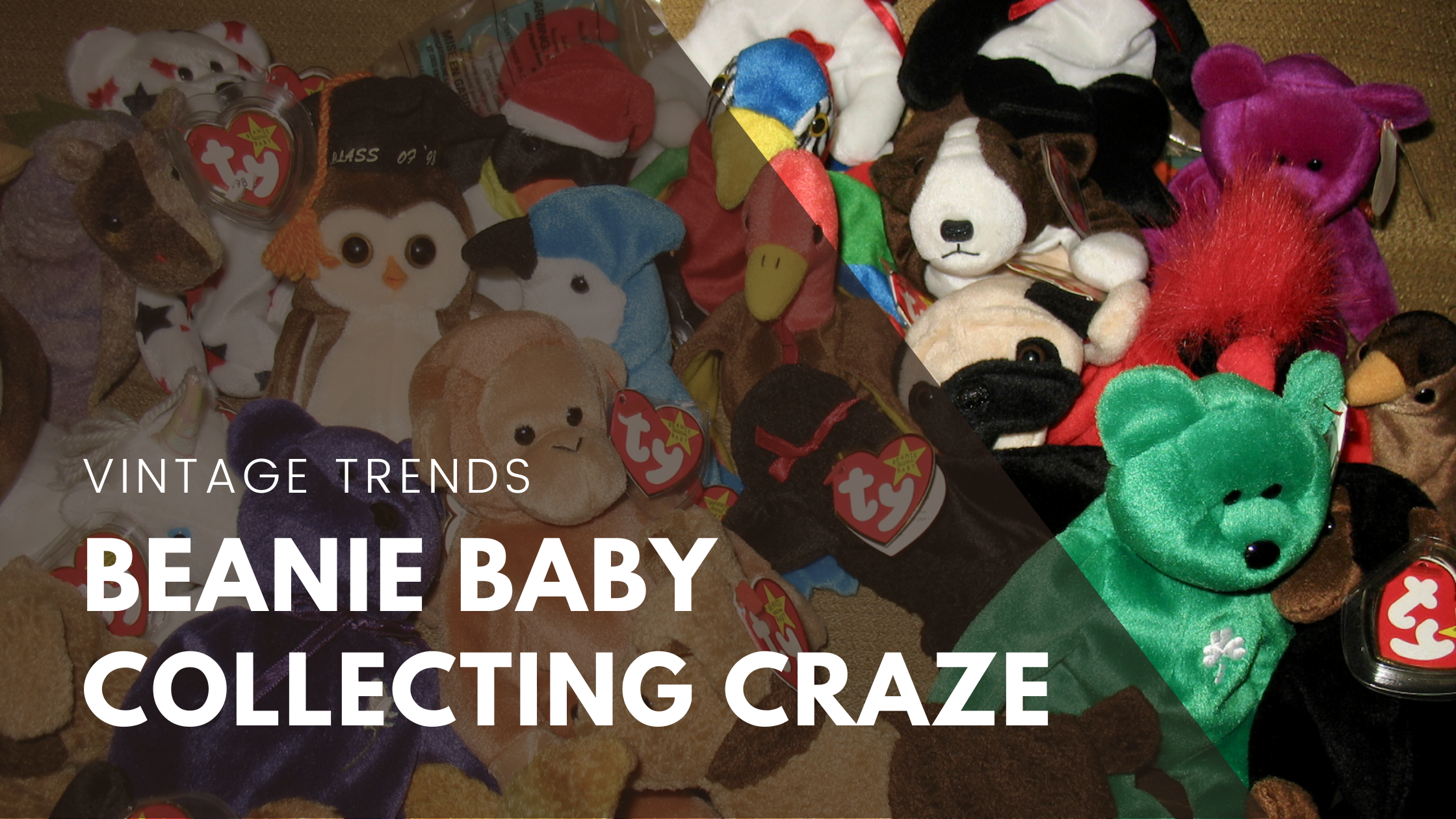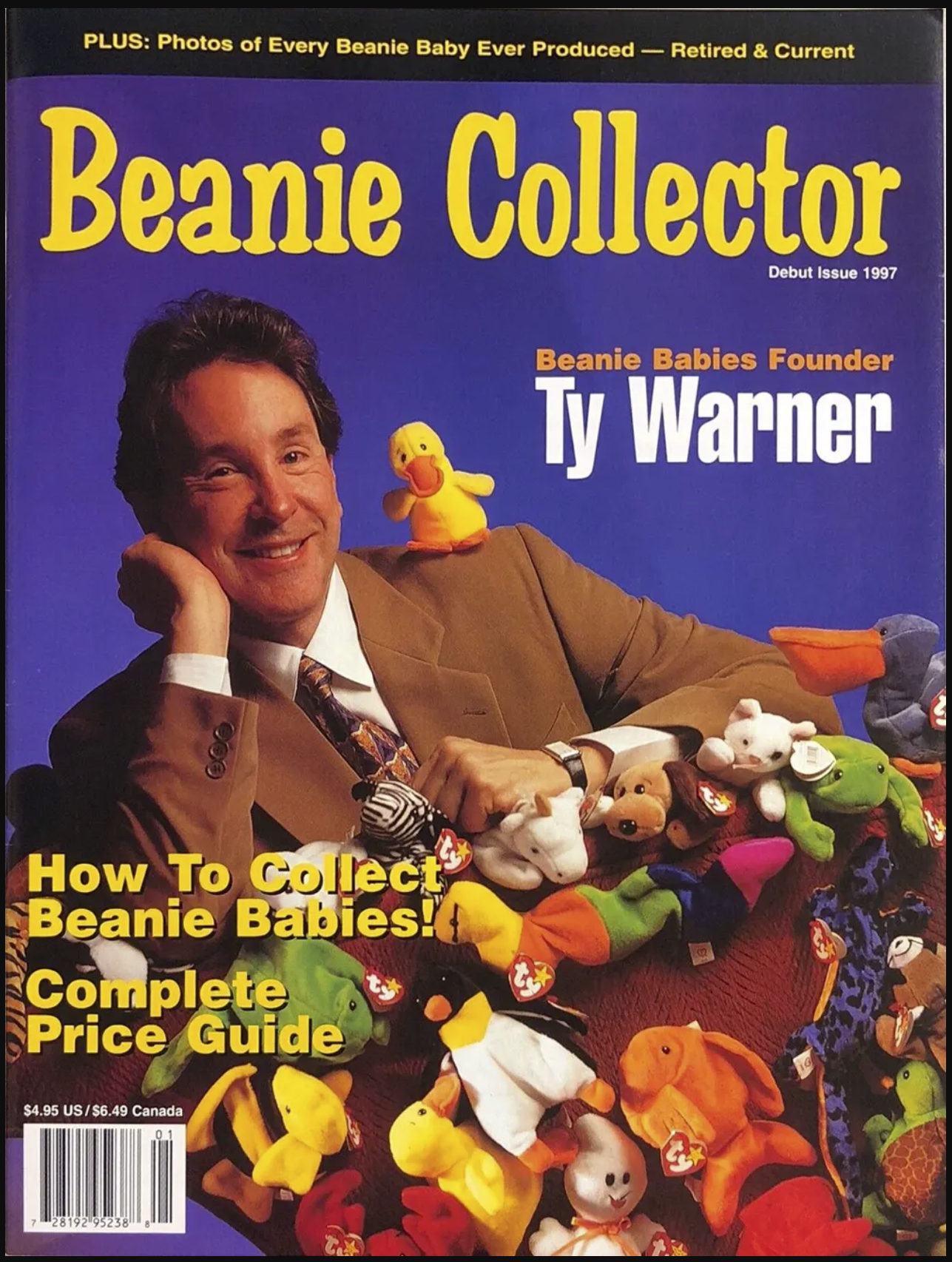The Beanie Baby Craze: A Look Back at the 90s Collectible Phenomenon
Beanie Babies were a collectible craze that took the world by storm during the mid to late 1990s. Ty Warner created the small plush toys with plastic pellets ("beans"), giving them a unique and huggable feel. Each Beanie Baby featured a name and a unique personality, often based on animals, and came with a heart-shaped tag displaying the toy's name and a poem that added to its charm.
The Beanie Baby craze began around 1995 when Ty Inc. released a limited-edition line of Beanie Babies, creating a sense of rarity and exclusivity. As the demand for these cute critters grew, Ty started to retire specific designs, further fueling the frenzy among collectors. People went to great lengths to find and acquire rare Beanie Babies, resulting in long lines, scalping, and intense online trading.
The Marketing Magic Behind the Beanies
The allure of Beanie Babies as collectibles was based on several factors:
Rarity: Retired Beanie Babies became highly sought after due to their limited availability, and collectors were eager to get their hands on them before they vanished from the market.
Emotional Appeal: Each Beanie Baby had a name and a personality, which sparked an emotional connection with collectors, making them more than just toys.
Social Phenomenon: The craze created a sense of community among collectors who would meet up, trade, and share their collections, fostering a vibrant and enthusiastic fanbase.
Investment Potential: Some collectors believed that Beanie Babies would appreciate over time, turning them into potential investments. However, this perception later proved to be a speculative bubble.
The Collapse of The Beanie Baby Frenzy
The Beanie Baby craze collapsed in the late 1990s and early 2000s. The downfall of this once-mighty collectible market can be attributed to several factors:
Oversaturation: During the height of the craze, Ty Inc. produced an ever-increasing number of Beanie Babies to meet the surging demand. This led to oversaturation in the market, diluting the perceived rarity and exclusivity of the toys. As a result, many Beanie Babies that were once considered valuable became much more common and lost their appeal among collectors.
Speculative Bubble: As the Beanie Baby market boomed, many saw them as potential investment opportunities, believing their value would continue to skyrocket. This created a speculative bubble, with collectors and investors frantically buying and hoarding Beanie Babies in the hopes of making significant profits. However, as more people entered the market for investment purposes rather than genuine appreciation, the demand quickly exceeded the actual value of the toys.
Retail Price Drops: As the craze began to lose momentum, retailers faced difficulties selling Beanie Babies at inflated initial prices. Many stores drastically discounted the toys to clear inventory, eroding their perceived value.
Internet Sales: The rise of online marketplaces like eBay enabled collectors to easily buy and sell Beanie Babies directly, bypassing traditional retail channels. This led to a flood of Beanie Babies hitting the secondary market, contributing to the price decline.
Ty's Business Decisions: Ty Inc. made questionable decisions affecting the Beanie Baby market. For instance, after officially retiring certain Beanie Babies, they sometimes "un-retire" them due to popular demand, leading to confusion and frustration among collectors.
Changing Trends: As the 2000s began, pop culture and collectible trends shifted, diverting attention from Beanie Babies to other toys and hobbies.
The combination of these factors resulted in a significant drop in the value of most Beanie Babies. Collectors who had once paid exorbitant prices for these toys found their investments worth far less than anticipated. The Beanie Baby market essentially collapsed, leaving many people with collections that were no longer worth what they had paid for them.
Teenie Beanie Glory The Bear 1999 - Available in shop
State of Beanie Baby Collecting Today
Despite the decline in value, Beanie Babies still hold a special place in the hearts of many who fondly remember the craze as a significant cultural phenomenon of the 1990s. Today, some rare Beanie Babies still hold value among collectors, but the trend has evolved into a more niche and nostalgic collector's market rather than a mainstream mania.
HOW TO DETERMINE CONDITION
Collectors understand that the condition of collectibles significantly affects their value. In the case of Beanie Babies, the condition of the toy and its tags are the most critical factors in determining its grade. Signs of wear are particularly significant.
Mint: For a toy to be considered in mint condition, it should show no signs of wear, and its hang and tush tags should be completely intact. Generally, toys that are in mint condition tend to sell for the highest prices during auctions.
Near Mint: Even if the toy is flawless, a slightly worn or bent tag is sufficient to classify it as near mint. Typically, you can sell near-mint items for 80-90% of the cost of a mint-condition toy.
Excellent: Toys in excellent condition are nearly perfect, except for creased or worn tags. They usually sell for 65-75% of the mint price. This is one step below near-mint condition.
Very Good: Missing, torn, or very worn tags on a toy in otherwise perfect condition warrant a label of very good and are priced between 40-60% of the mint price.
Damaged: Beanie Babies were created as toys, and many have been played with. Significant wear and tear on the fabric, missing tags, and signs of repairs are all evidence of putting them in the damaged category. Toys that have been played with typically sell for 5-25% of the mint price.
OTHER CONSIDERATIONS
Aside from its condition, other factors affect the value of your Beanie Babies. One of these factors is whether the toy has been retired, as retired Beanie Babies tend to be worth more than those still in production due to their limited availability. An excellent case in point would be The Original Nine Beanie Babies, all retired and still highly sought after today.
Patti the Platypus
Spot the Dog
Squealer the Pig
Brownie (later called Cubbie), the Bear
Chocolate the Moose
Pinchers the Lobster
Splash the Killer Whale
Legs the Frog
Flash the Dolphin
When checking the hang tag of your toy, whether it is currently being produced or has been retired, it's essential to determine its generation (excluding toys with errors.) Like first-edition books, first-generation Beanies hold a higher value than later editions. Additionally, it's worth looking at the tush tag to see if it was filled with PE pellets or the more desirable PVC pellets.
Valuable Beanie Babies Today
Some of your Ty Beanie Babies could be valuable, especially if they have tag or manufacturing errors. However, the prices for these items are not guaranteed and are based on what people have paid on eBay and in other auctions.
Large Wallace and His Squad: Some Beanie Babies are worth more when sold as a collection, such as the Large Wallace Ty paired with two regular-sized Wallaces and Cashew and Huggy. Remember that a misspelling or other inconsistency on the tag may increase the value of these items. The large-sized Wallace is rare, but if you can pair him with the four other bears in the squad, you could see a cash-out of up to $600,000. Wallace and his Squad are currently listed for $5,000 on eBay.
Bubbles: Initially introduced in 1996 and underwent several modifications during its manufacturing lifespan. These changes made the product prone to errors, but the limited-run Beanies versions of the toy fish are highly valuable. If you own a fish with incorrect tags, it could sell for over $129,000!
Piccadilly Attic: Although Piccadilly Attic may not be the most visually appealing Beanie Baby, the bear wearing a clown outfit is still worth a significant amount for some unknown reason. It is one of the most valuable Tys, and its worth has risen to an impressive $125,000 in recent years.
Batty: A rare and specific production error on Batty the Bat could increase its value to $124,900; your Batty must have an extra foot to cash in on this estimate. A multi-colored Batty (4035) was sold on eBay in March 2022 for a whopping $20,000.
Scoop: Scoop the Pelican beanie is a valuable collector's item if it's in pristine condition. Even though it was only produced for a couple of years, some production errors occurred during that time. If you're hoping to collect a rare item, watch for the batch that shipped with a blank tag - currently worth $100,000 to the right collectors. Even if it's in its normal state, this limited-edition beanie can still fetch up to $50,000—a mint condition Scoop with tag errors sold on eBay for $9,000 in February 2022.
The Beanie Baby market has evolved into a more niche and appreciative community as the years go by. Those who still collect Beanie Babies do so not solely for the potential monetary value but for the joy of the hunt, rediscovering childhood treasures, and connecting with like-minded individuals who share their passion.
So, whether you have a collection of rare and retired Beanie Babies or hold onto a few favorites from your childhood, remember that the value of these little plush toys extends far beyond their price tags. They have within them the magic of nostalgia and the warmth of cherished memories, making them true treasures in the hearts of those who collected and loved them.




